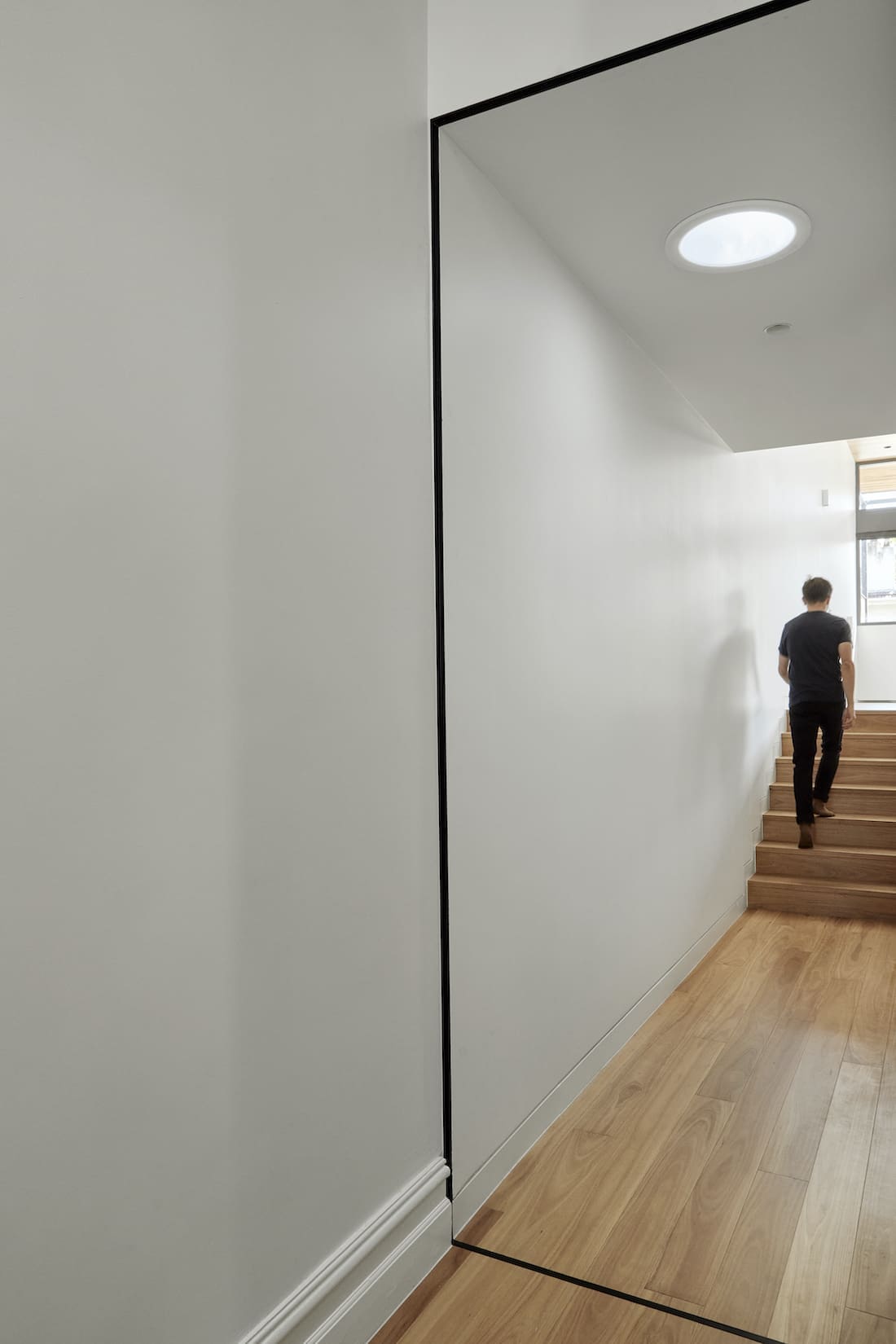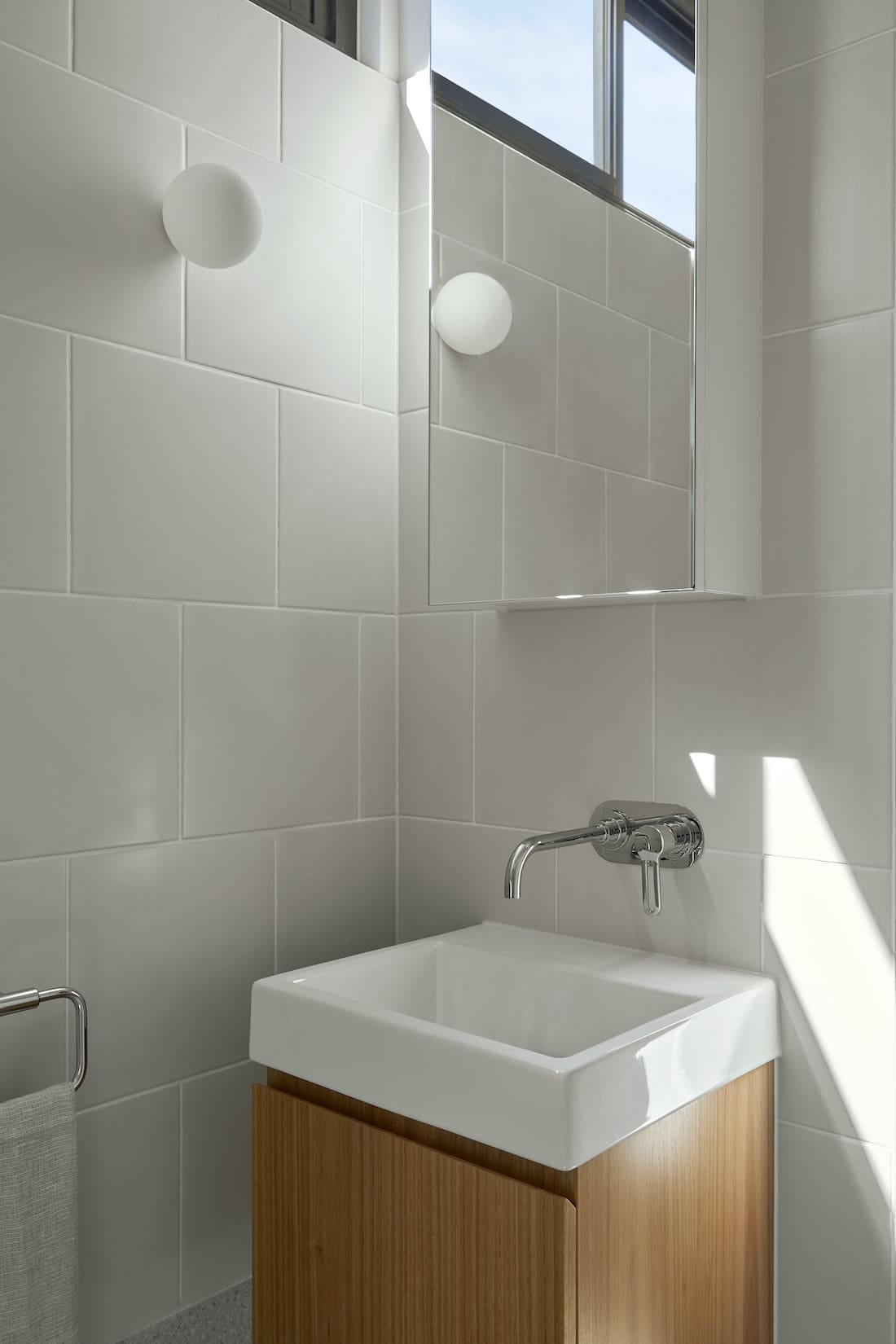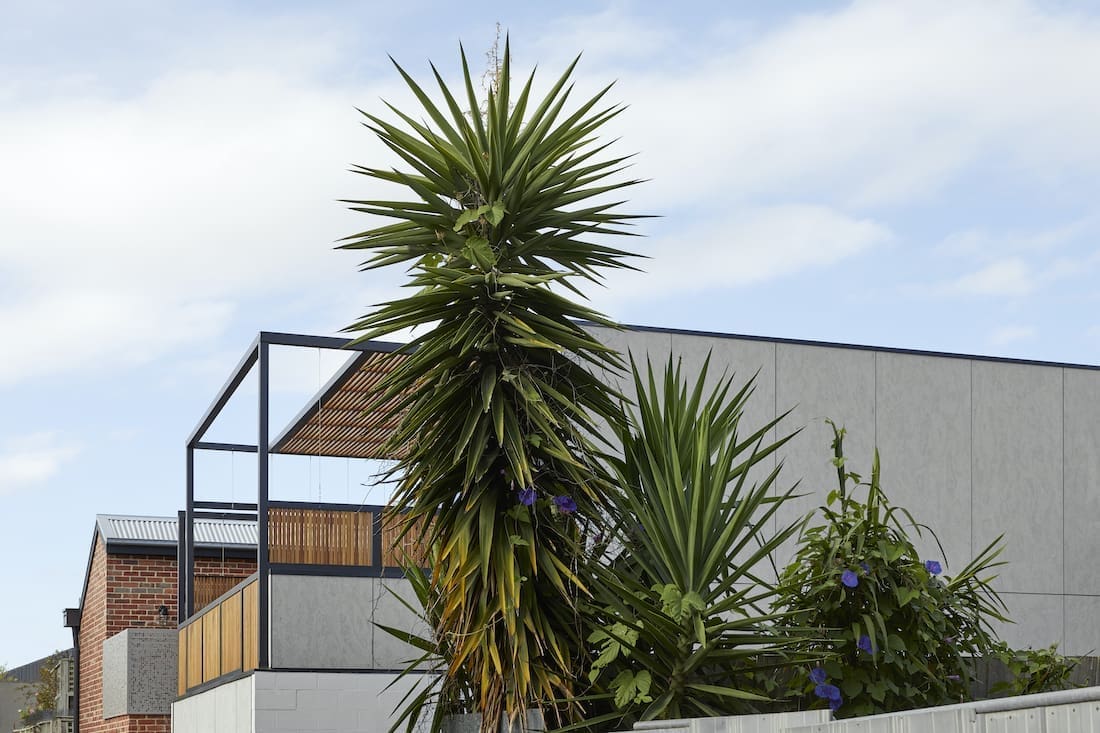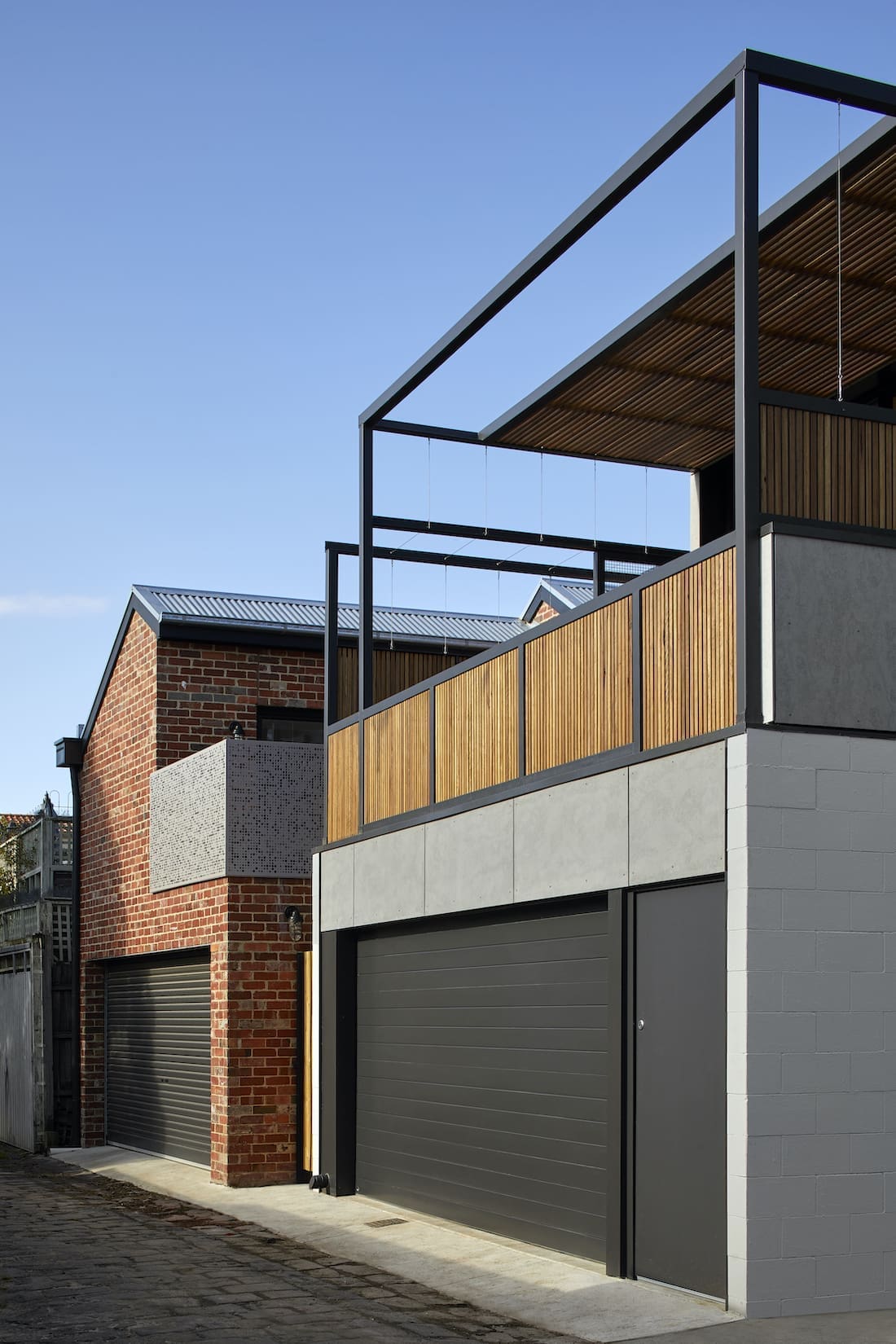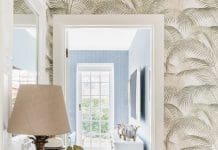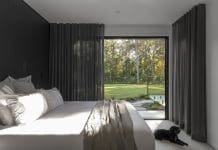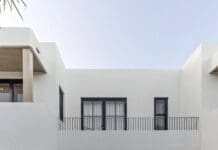Once a dark and damp terrace home in urgent need of some love, Laneway house has transformed into a light-filled contemporary home. It’s a lesson on how heritage properties can be reimagined for modern living while retaining their original charm.
So explore this sustainable heritage-listed home renovation with us as we chat with Dmitry Argentov from Subtract Architecture.
Related article: The contemporary terrace house renovation — a tour around Albert Park project
Related article: Wall-to-wall windows and cathedral ceilings: The breathtaking features of Botfield Residence
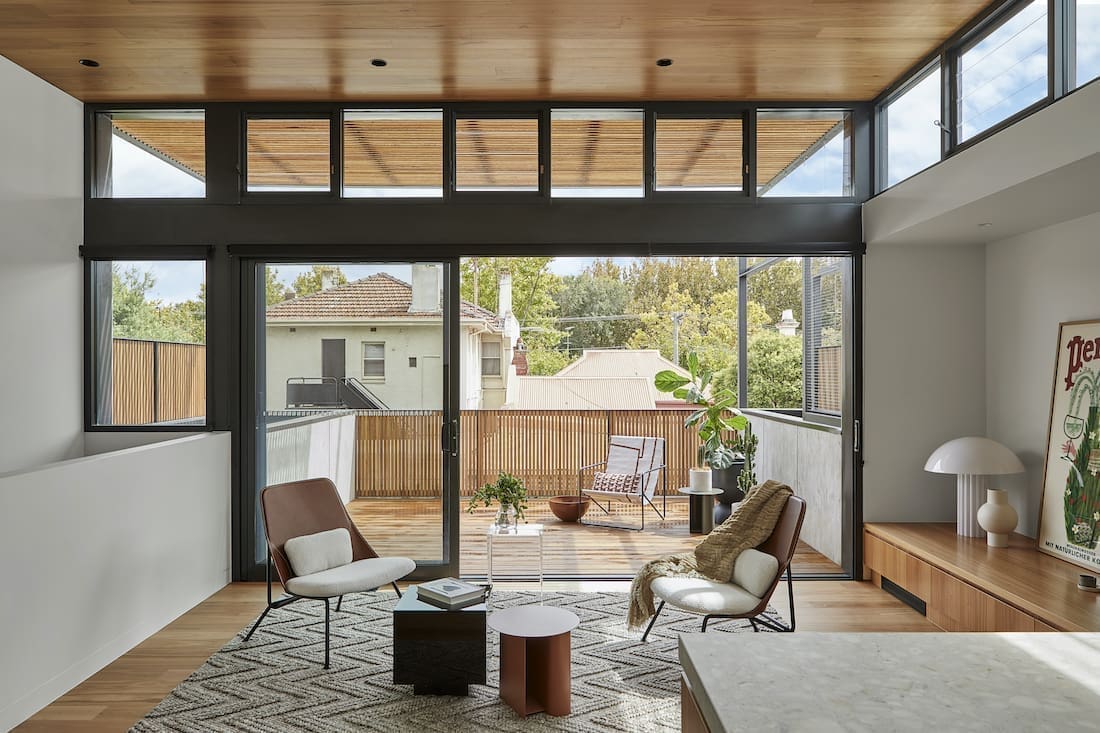
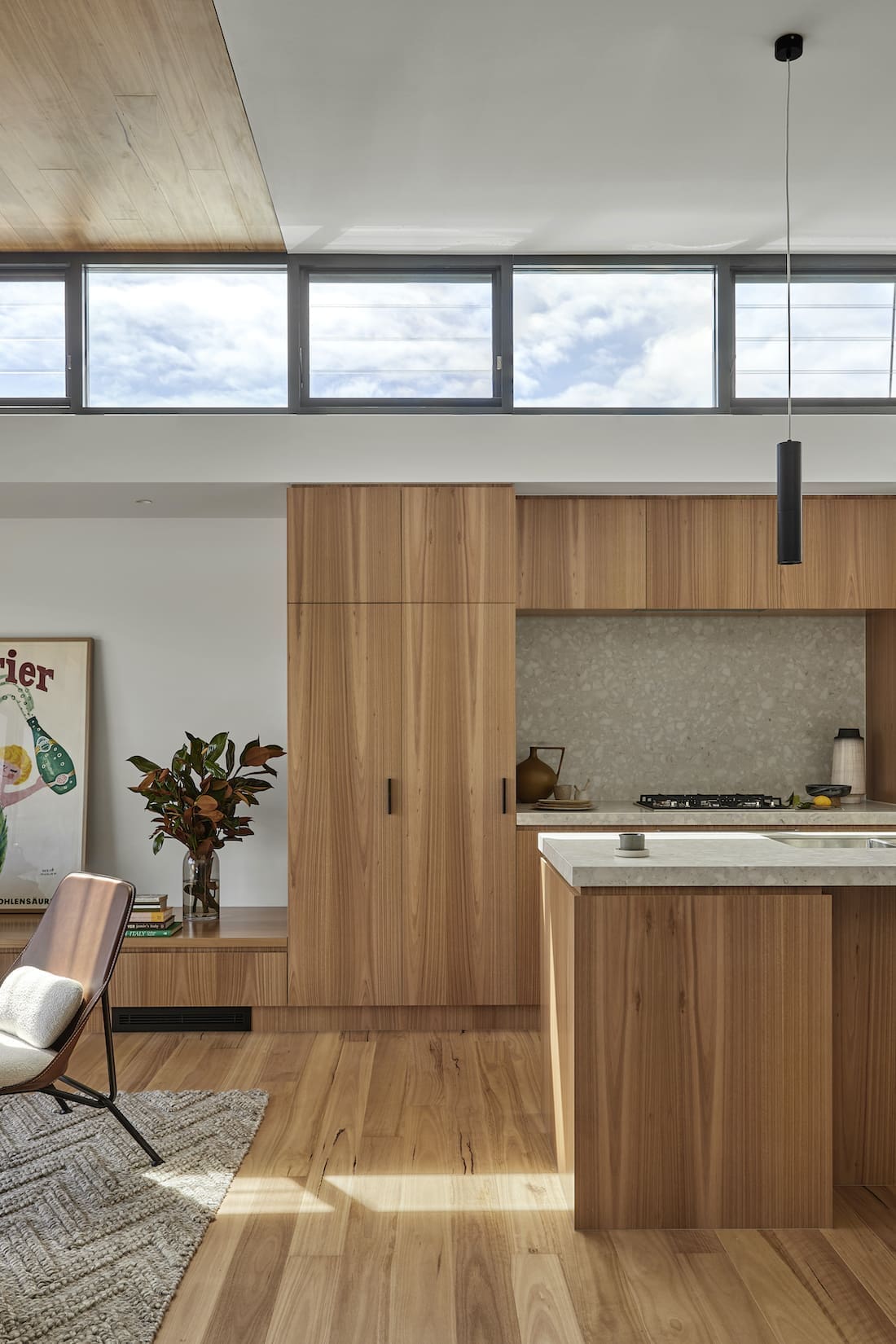
Renovating any property has its challenges. And a heritage-listed house on a laneway site in the inner city… we expected more than a few.
“The original house was dark and damp, with poor natural ventilation and minimal outlook to its surroundings.
“It was also situated on a busy road and on a narrow and sloping parcel of land. Although the design is clean and minimal, there are a lot of parts to make it work! There’s also a bit of complexity to the engineering of the house.
The client was attracted to the original house due to its heritage features and inherent structural integrity. Despite their love for these heritage features, they acknowledged that it required a significant restoration.
“Having such a constrained site also means that we had to be mindful of cost at every stage of the project. So we explored a design that was as cost efficient as it was functional.
“Thankfully few design changes were made along the way. We put in a fair bit of work early on to resolve the design in detail. Before we started, we spent time managing the expectations of the client. Now, the final product looks pretty much like the initial sketches. Having a trusting client and detail-oriented builders was a huge help — the whole process from start to finish was relatively smooth as a result.”

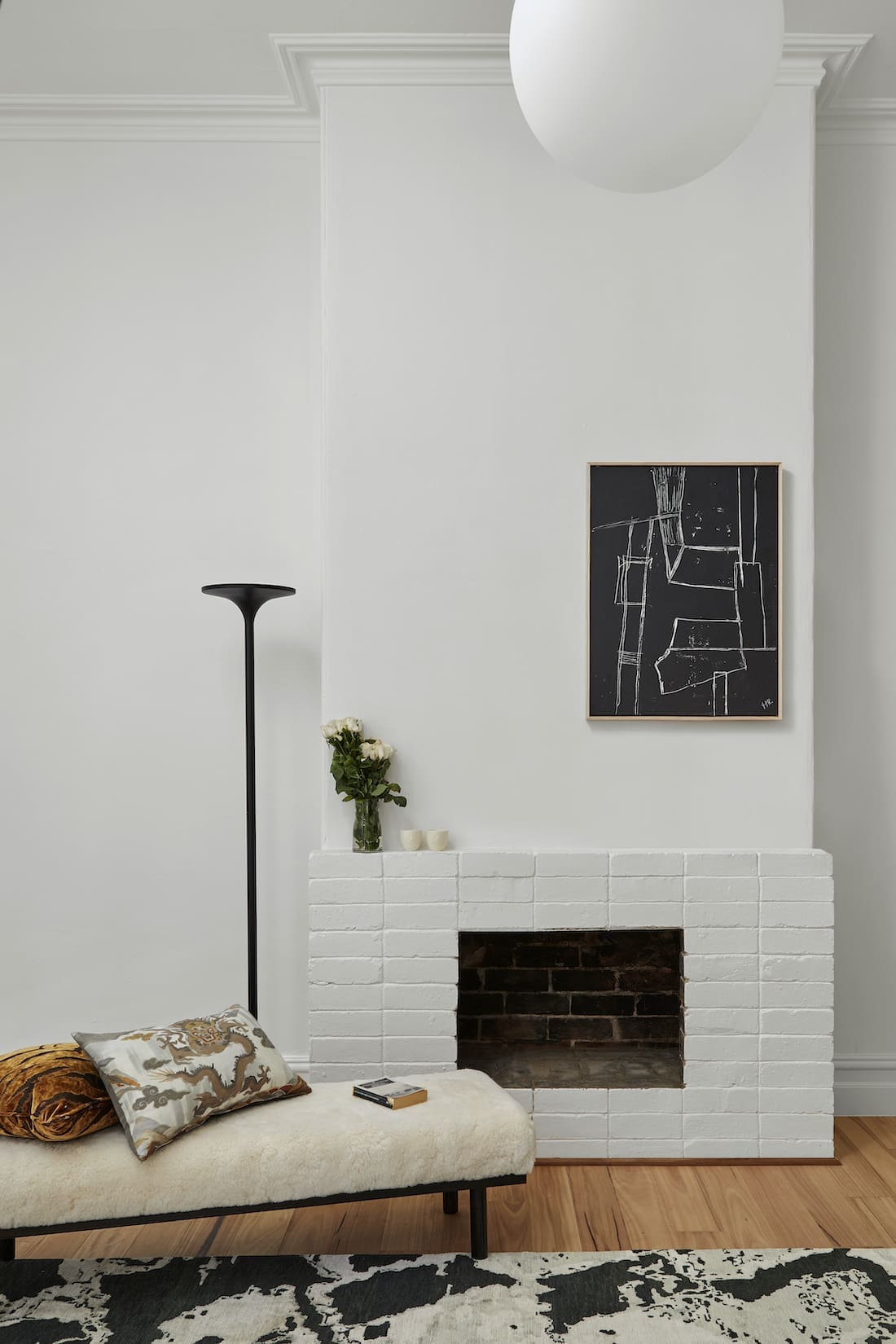
The beauty of this renovation comes from the sustainable and cost-efficient materials that offer timeless appeal without costing the earth.
“The material palette is hard-wearing, sustainable and cost-efficient. Painted concrete block and cement sheeting complement the new extension. Blackbutt timber battens and decking provide a softer accent. Internally, blackbutt joinery matches the timber flooring throughout the house. And we used chrome fixtures in the bathrooms and kitchen for their durability and ease of maintenance,” explains Dmitry.
“The light fixtures that we chose also have a timeless aesthetic. They provide a soft glow which gently illuminates the rich timber textures throughout. We didn’t select some of the fixtures, like the spherical pendants, until the end of the project. This allowed us to have a final understanding of the proportion, and the look and feel, of the renovated rooms.
“My favourite aspect of this project is the amount of natural light and ventilation. We’ve installed skylights in the existing section of the house, and included extensive glazing to the new extension. It has completely transformed the existing residence!”

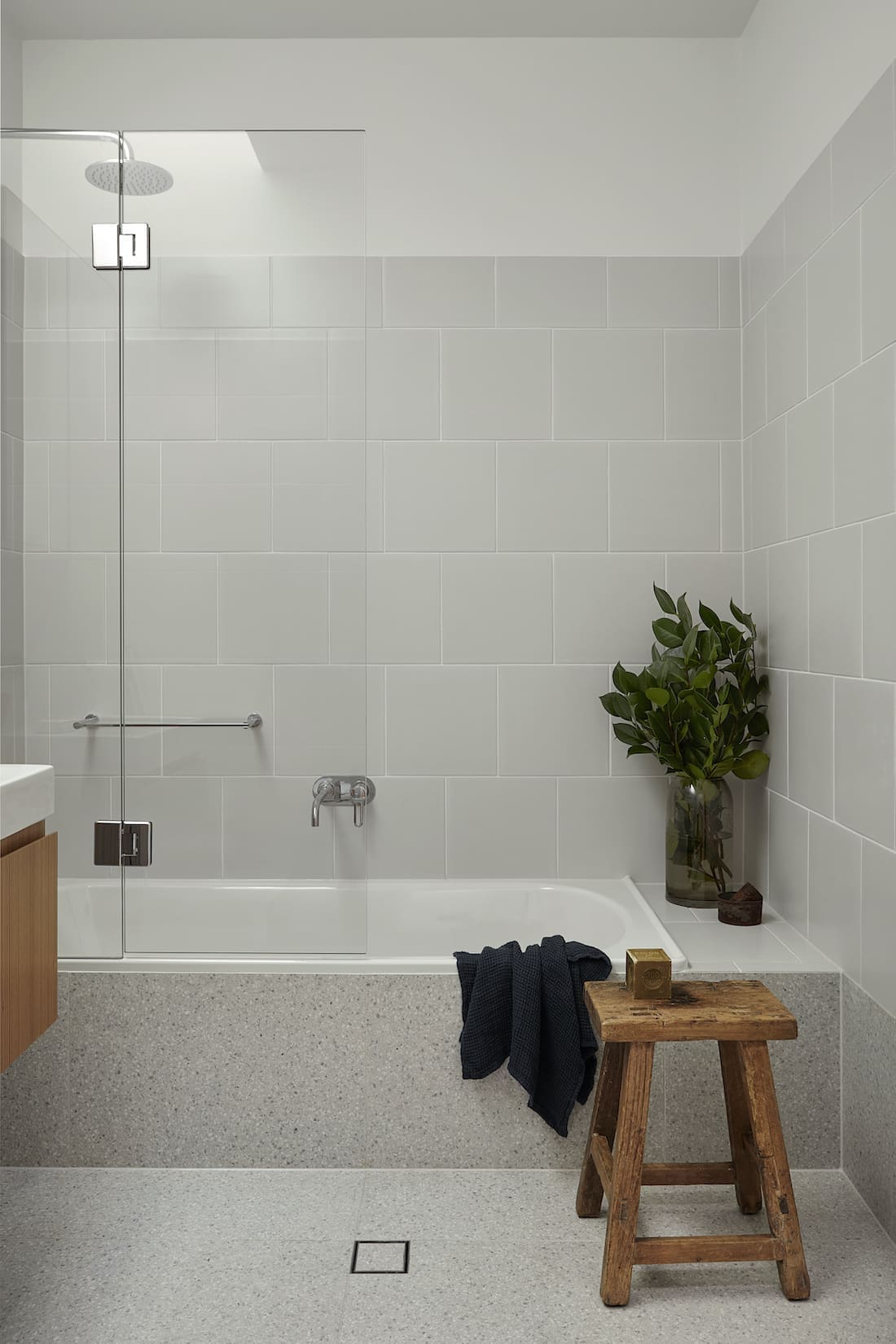
It was a balancing act to fill the home with natural light while maintaining a sense of privacy. But Dmitry had a few design tricks up his sleeve.
“The design challenge was creating a sense of privacy whilst allowing for outward views. We achieved this in a few ways. Firstly, we oriented the house towards the rear laneway. The extension with elevated terrace and living and dining area take advantage of the views to the neighbouring treetops. We also integrated timber batten screening around the terrace to maintain privacy. And planter beds at the rear terrace encourage plant growth and limit overlooking.
I personally love the living space at the rear and the seamless transition to the terrace — forging a meaningful connection to the outdoors can be sometimes hard to achieve with inner city living.
Interior design and architecture — Subtract Architecture
Build — Scale Constructions
Structural and civil engineer — RCL Consultants
Styling — Sandford Gray
Photography — David Kulesza
Thank you Dmitry for showing us around this sustainable heritage-listed home renovation. You can find Subtract Architecture’s full portfolio by checking out their website, or keep up with their Instagram. What are your thoughts in this newly renovated terrace house? Do you have a favourite design element? Let us know your thoughts in the comment section below!
More home tours here


